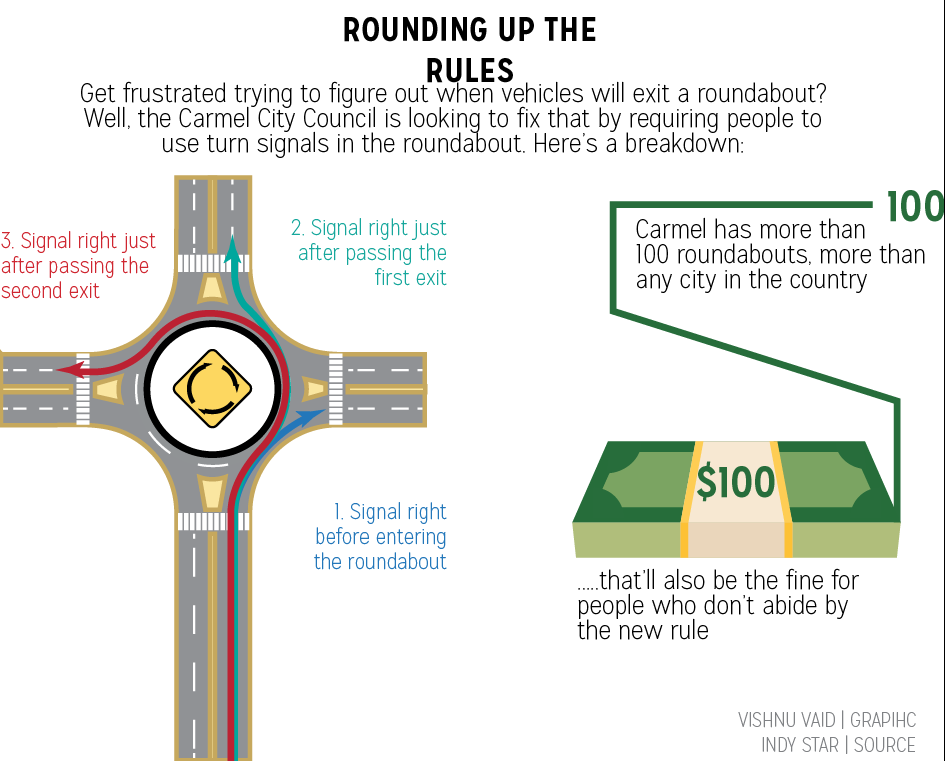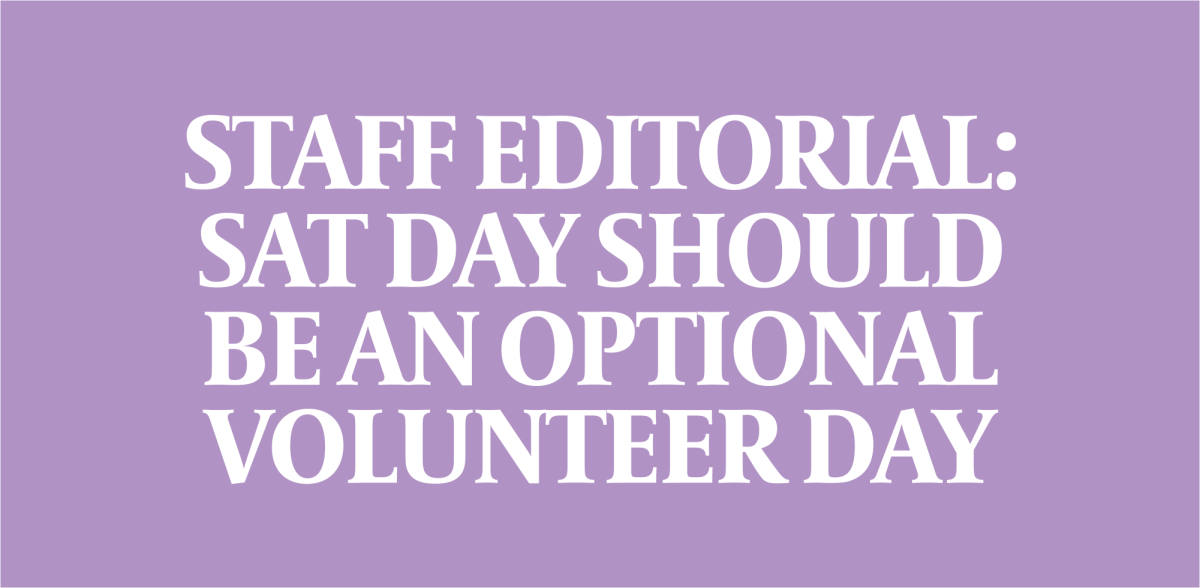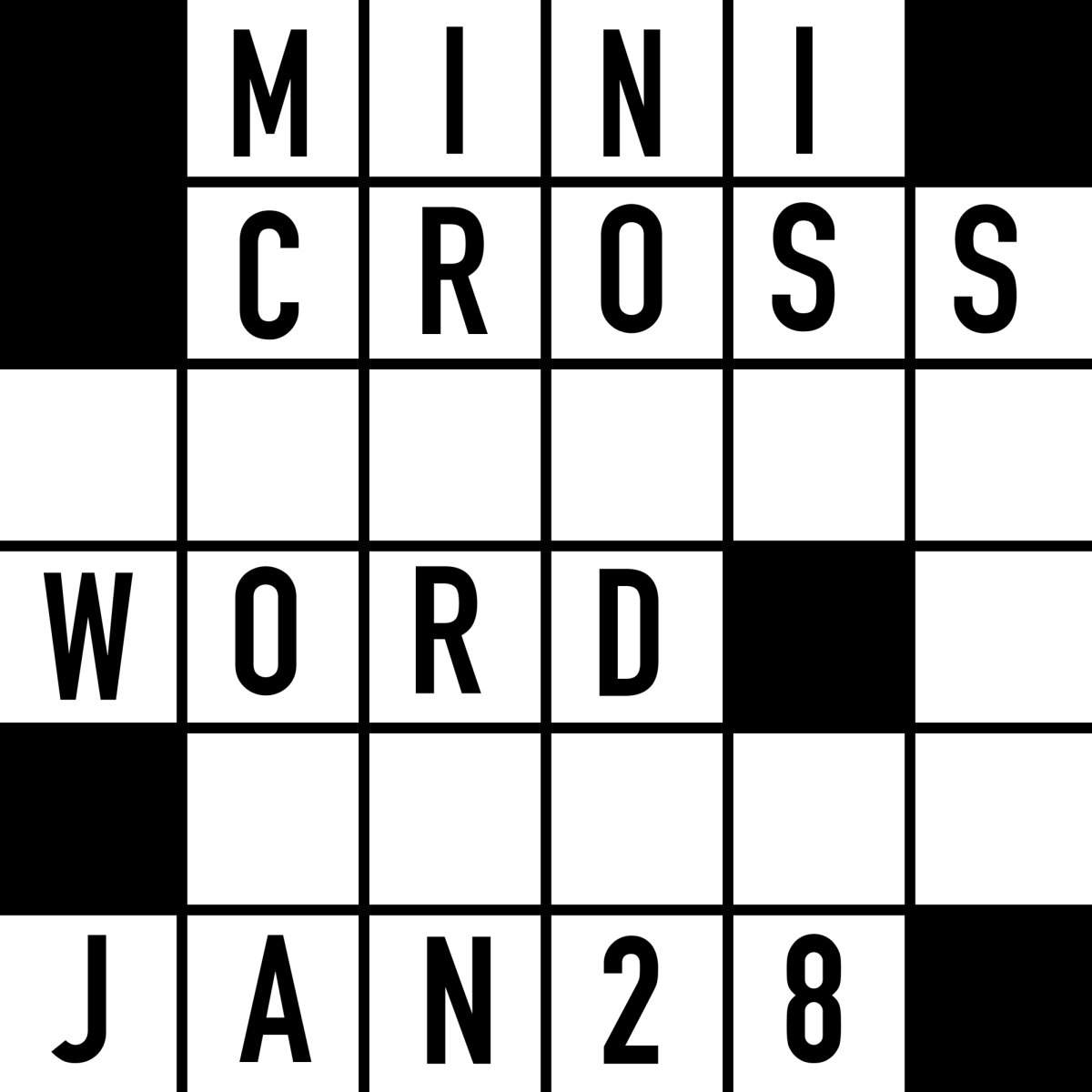They’re the City of Carmel’s claim to fame – roundabouts, and lots of them. I’ll admit that I was once among the roundabout-naysayers – why clog up the city with construction detours to turn an intersection into another kind of intersection? I’m impatient. But now that I’ve been a licensed driver for a fairly long while, I love a good roundabout. When people use them correctly, they’re efficient, far quicker and breezier than a four-way stop.
I remember when I first began to drive, muscles coiled tightly with nervous energy and seated next to my dad, also nervous. Roundabouts terrified me. As I drove more and more, those days became a thing of a past, and I became maybe a little too daring with my entrances. Sorry, fellow drivers. Now, I think I’ve reached the happy medium that can only come with experience. My instincts are sharper. Certainly, roundabouts can be stressful for people who aren’t used to navigating them, but at the end of the day, it’s simple enough: judge if you have enough time to enter without disturbing the path of another car, and always keep in mind that it’s better to be safe than sorry.
The Carmel City Council is now considering an ordinance that would require drivers to use signals to indicate when they’re exiting the roundabout, thereby making it simpler for other drivers to determine if it’s safe for them to enter. The idea is that drivers can avoid the stress and possible mishaps of the situation above, but this ordinance would result in the opposite.
Firstly, it’s not an effective system. Turn signals are great when one is turning, but a roundabout isn’t exactly a turn. The issue of when a driver would actually be required to signal, and when a signal would actually be effective, is a consideration. For instance, perhaps a driver wants to take the third exit of a roundabout, which would correspond to a left turn. If they turn on their left turn signal as they enter, drivers at other entrances of the roundabout, who don’t know when the other driver entered and therefore don’t know what exit the driver is signalling toward, don’t gain any extra knowledge from the driver using a signal. So do drivers signal right before they exit? The effectivity of a warning directly before a driver exits, probably after they’ve already begun turning towards the exit, is negligible.
Secondly, and more importantly, required turn signals are a hit to driver accountability, which is simply dangerous. When a driver takes a left turn onto a road, it’s their responsibility to determine if there are cars coming. Similarly, when entering a roundabout, it’s the driver’s responsibility to make sure they’re not going to cut anyone off or cause a collision. When driving, personal responsibility is paramount. A person can’t depend on other people to make the safest decisions possible; it’s why “defensive driving” is a pillar of driver’s education classes. Driving is an activity that can put lives at risk, and the only person that one can truly hold accountable for keeping them safe is themself. If someone accidentally signals or forgets to signal and another driver misinterprets the situation, a collision could easily occur.
An ordinance requiring turn signals is unnecessary and potentially dangerous. Though navigating roundabouts can be stressful, holding other drivers accountable for determining when it’s okay to enter a roundabout isn’t a solution to this problem.































![AI in films like "The Brutalist" is convenient, but shouldn’t take priority [opinion]](https://hilite.org/wp-content/uploads/2025/02/catherine-cover-1200x471.jpg)













































![Review: “The Immortal Soul Salvage Yard:” A criminally underrated poetry collection [MUSE]](https://hilite.org/wp-content/uploads/2025/03/71cju6TvqmL._AC_UF10001000_QL80_.jpg)
![Review: "Dog Man" is Unapologetically Chaotic [MUSE]](https://hilite.org/wp-content/uploads/2025/03/dogman-1200x700.jpg)
![Review: "Ne Zha 2": The WeChat family reunion I didn’t know I needed [MUSE]](https://hilite.org/wp-content/uploads/2025/03/unnamed-4.png)
![Review in Print: Maripaz Villar brings a delightfully unique style to the world of WEBTOON [MUSE]](https://hilite.org/wp-content/uploads/2023/12/maripazcover-1200x960.jpg)
![Review: “The Sword of Kaigen” is a masterpiece [MUSE]](https://hilite.org/wp-content/uploads/2023/11/Screenshot-2023-11-26-201051.png)
![Review: Gateron Oil Kings, great linear switches, okay price [MUSE]](https://hilite.org/wp-content/uploads/2023/11/Screenshot-2023-11-26-200553.png)
![Review: “A Haunting in Venice” is a significant improvement from other Agatha Christie adaptations [MUSE]](https://hilite.org/wp-content/uploads/2023/11/e7ee2938a6d422669771bce6d8088521.jpg)
![Review: A Thanksgiving story from elementary school, still just as interesting [MUSE]](https://hilite.org/wp-content/uploads/2023/11/Screenshot-2023-11-26-195514-987x1200.png)
![Review: "When I Fly Towards You", cute, uplifting youth drama [MUSE]](https://hilite.org/wp-content/uploads/2023/09/When-I-Fly-Towards-You-Chinese-drama.png)
![Postcards from Muse: Hawaii Travel Diary [MUSE]](https://hilite.org/wp-content/uploads/2023/09/My-project-1-1200x1200.jpg)
![Review: "Ladybug & Cat Noir: The Movie," departure from original show [MUSE]](https://hilite.org/wp-content/uploads/2023/09/Ladybug__Cat_Noir_-_The_Movie_poster.jpg)
![Review in Print: "Hidden Love" is the cute, uplifting drama everyone needs [MUSE]](https://hilite.org/wp-content/uploads/2023/09/hiddenlovecover-e1693597208225-1030x1200.png)
![Review in Print: "Heartstopper" is the heartwarming queer romance we all need [MUSE]](https://hilite.org/wp-content/uploads/2023/08/museheartstoppercover-1200x654.png)



Scott Batson • Apr 21, 2017 at 1:14 pm
Signaling your direction of travel is law in most states and courteous behavior.
I’ve not developed my mind reading to the point of knowing which way someone is going to drive, so that right signal lets me know it’s probably safe to enter the roundabout, and the left one that it is not.
It’s quite easy to signal you path at a modern roundabout, considering the 15-mph speed you should be driving.